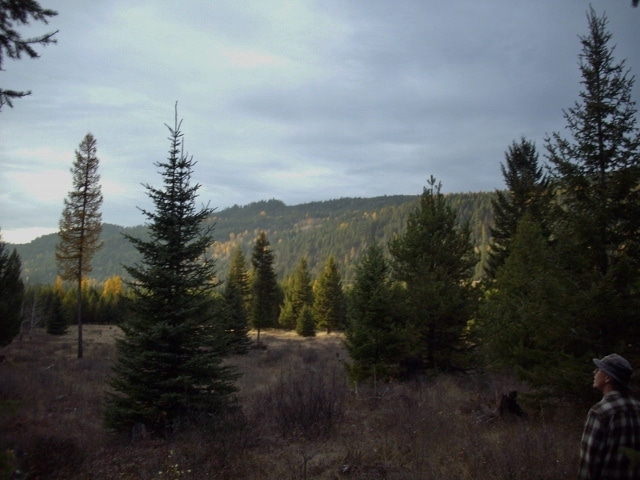
Local Trees for Wood Turning – Pine (Pinus sp.)
Living in the southern interior of B.C. I am surrounded by Lodgepole Pine (Pinus contorta) trees. With two needles in a bunch and a narrow straight tree they are easy to recognize. Pine is often overlooked for fine wood working or wood turning but it has some interesting characteristics to take advantage of. Utilizing local trees for turning wood is good craft practice.

Species of Pine in Canada and the N. USA
There are a lot of pines throughout the world and there are 9 native to Canada. These are divided into two groups, 5 needle pine (soft pines) and two or three needle pines (hard pines). The 5 needle pines produce wood that is good for carving. We have an Eastern (Pinus strobus) and Western White Pine (Pinus monticola) , that are 5 needle pines, that produce commercial wood. Other 5 needle pines growing in B.C., are Whitebark Pine (Pinus albicaulis) and Limber Pine (Pinus flexilis) that grow at higher elevations and as a result are quite twisted in their growth pattern.
The hard pines have wood that is a bit harder than the soft pines and about the same hardness as Trembling Aspen (Populus tremuloides), an hard wood deciduous tree. There are two, three needled Pines, Ponderosa (Pinus ponderosa) and Pitch (Pinus rigida). The Ponderosa Pine grows in the dry areas of southern B.C. and is a large straight tree with very distinct growth rings. There are three, two needled pines in Canada. The Red Pine (Pinus resinosa) in eastern Canada, the Jack Pine in eastern Canada extending to Alberta in the west, and Lodgepole Pine that is in BC and Alberta. The Jack (Pinus banksiana) and Lodgepole pines can cross and produce viable hybrid offspring.
Characteristics of Turning with Pine
All of the pines produce branches at the nodes of the trunk in a whorl shape. This characteristic allows you to place the growth rings of the branches into specific locations on your turnings. The Norfolk Island Pine (Araucaria heterophylla), a native of the Norfolk Islands, has very large branches and an even presentation along the whorl. While not a true pine, this tree is found in the Southern hemisphere and grows only in tropical conditions. It is related to Monkey Puzzle Tree (Araucaria araucana). I will discuss it here as it is often marketed to wood turners as pine and is desirable because of its whorl pattern. The resulting grain pattern in a bowl is often referred to as a flower or wagon wheel pattern. A similar pattern can be achieved with all pines but will not be quite as pronounced.
The other characteristic is the definite growth rings that the conifers, like pine, produce. This is the result of the pines growing at a slower rate during the dormant or winter season rather than not growing at all like a deciduous tree.

Pine is an excellent wood for beginning turners. It is a soft wood and is easy to shape on the lathe. Cutting with a gouge or skew chisel produces a better finish than a scraper when turning between centres. When you are turning bowls you will need a properly burnished scraper to produce a good surface. This scoop is made of lodgepole pine and the growth rings are easily seen. It was hollowed easily with a spindle gouge and the outside was done with a skew chisel. The little hollow cup that the scoop can fit into was turned from the portion of the wood left on the lathe after turning the scoop. You can see the cells of the wood where the cut has gone across grain in the bottom. The line of lighter wood at the tip of the scoop is because this wood has been protected from light. So the exposed wood has darkened over time. The knots on this branch are on the handle so the star pattern is not visible.
With these turnings I did not avoid the pith of the wood. The centre of the wood goes through the handle of the scoop and the centre of the hollow cup. I turned these six years ago and there has been no separation of the wood.
Turning a bowl from a pine tree gives you the option for placing the knots from the branches. Including the centre of the wood gives you the flower or wagon wheel pattern. If the knots from the branches are too high then you get the knots spread out around the rim of the bowl. If they are too low then you might miss the pattern altogether or get a small glimpse of it on the bottom of the bowl. This is a judgment call by the turner. Your design skills will improve over time, so don’t be afraid to make some shavings and learn from the experience.
Challenges turning with Pine
Pine can have problems with too much pitch. Usually if the wood is acclimatized to your conditions and has dried for a sufficient period then pitch is usually not much of a problem. You can clean the cutting edges of your tools with solvent if needed.
You can also have a problem with the growth rings causing undulation on your turning. If you need a super smooth surface then a hardwood species would be a better choice. Sharp tools can reduce the amount of undulation and careful sanding will work. When I was just learning to turn, and using sanding to smooth out my rough cuts with a spindle gouge, I found that heavy sanding with 80 grit sandpaper increased the undulation from the growth rings. Use light tough and sand with 220 0r finer paper to reach a smooth surface with pine, and avoid undulation.
Pine is a soft wood and dents easily from being dropped and can be accidentally damaged during the turning process. Using gouges haphazardly or moving the tool rest into the turning can make dents that are difficult to smooth out. But the softness of pine makes it easy to get the shape that you are looking for in turning. With the abundance of pine available in Canada, it is an inexpensive wood to turn for beginners.
Your Turn:
What’s your favorite pinus sp. to turn? What do you find challenging working with pine? Leave a comment.
Resources:
Trees In Canada
Turning Green Wood
Tauntons Complete Illustrated Guide To Turning
500 Wood Bowls: Bold & Original Designs Blending Tradition & Innovation (500 Series)











 9 surprising things you can make out of local wood
9 surprising things you can make out of local wood





To practice face turning, I found that gluing up layers of dimensioned pine, eg 1×8, into multiple layers, created low cost blocks of wood in practically any size. Using some northern white pine, I made a very nice looking bowl that I gave my sister in law for her birthday. If I could post pictures here, I’d show it off. In this case, I used #2 1×8 white pine from Maine, cut into 8 x 7 1/4″ chunks, being careful to sequence the pieces in order as the cutoffs and orient the grain in the same direction. The contrast between early and late wood made a fantastic swirling pattern that was easy to cut, easy on the budget, and looks beautiful!